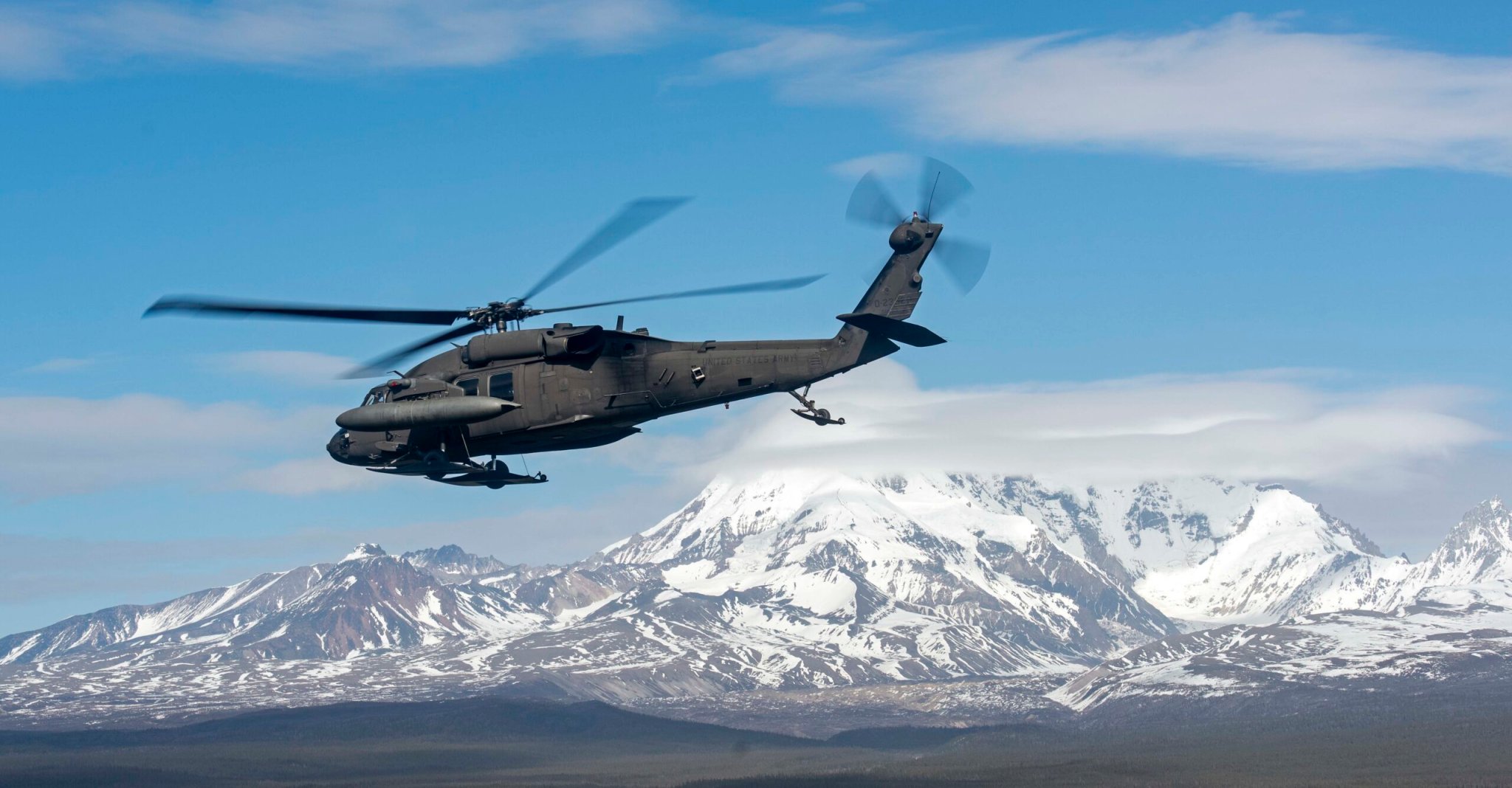

Alaska Army and Air National Guard rescue teams had a busy July 4th weekend, flying almost 2,000 miles on four missions bringing 10 people out of the state’s wilderness.
None of those rescued were badly hurt, but at least two required medical attention and all were stuck far from a road or other route out of the state’s rugged backcountry.
Our friends at The Drive have a report on a fifth rescue from the state over the weekend – this one civilian – though with a distinct flavor of military aviation: When a Jeep Grand Cherokee got stuck 16 miles up a battered backcountry road to a glacier, a civilian-owned UH-60 Black Hawk carried it out as a sling load.
Though Alaska’s fleet of military aircraft are not generally tasked to recover private property like stuck cars, the state’s Army and Air National Guardsmen routinely respond to medical emergencies around the vast, mostly roadless state. In a typical year, units might fly to rescue alpine climbers on Denali, pull injured fishermen off crab boat far out to sea, search for hunters stuck on wild rivers and transport Native Alaskans experiencing acute medical emergencies from villages to larger hospitals
But four missions in one weekend is busy, even by Alaska standards. Between Friday, June 30, and Tuesday, July 4, Alaska crews responded to a hiker with a leg injury, two separate plane crashes and a minor who, hiking with their mother, suffered a serious allergic reaction.
“The first call for assistance came to the Alaska Rescue Coordination Center from Alaska State Troopers June 30,” Alaska officials said in a press release. “A hiker had used a satellite communication device to call for help after experiencing a significant leg injury.”
With weather too poor for a civilian helicopter to reach the hiker, rescue officials tasked a team from the Alaska Air National Guard’s 176th Wing to find the hiker.
The wing is a full time rescue unit based at Joint Base Elmendorf-Richardson. The unit flies HH-60 Pave Hawk helicopters and HC-130 tankers, both of which often carry teams of highly-trained pararescue specialists, or PJs. After finding the hiker, the helicopter lowered two PJs on a hoist to recover him. Once onboard, the crew took the hiker to Providence Alaska Medical Center in Anchorage.
An Air Guard HH-60 and PJ team responded again on July 2 when a small plane crashed near the McArthur River, a popular, remote fishing spot about 60 miles southwest of Anchorage. The crew found and flew out four uninjured people, two of whom had been on the small airplane, and the other two who had been stuck near the river due to bad weather.
Two days later, crews were back at the McArthur river for another plane crash. After a pilot called authorities to report that he’d crashed, an Army Guard UH-60 from the 207th Aviation Regiment, also based at JBER, flew to the site and picked up three people, none with injuries.
Finally on July 4th, National Park Service officials called for help transporting a “juvenile hiker with a severe allergic reaction that had impacted their eyesight while on a glacier. Another helicopter and PJ crew from the 176th responded, this time accompanied by an HC-130 tanker that refueled the HH-60 in midair as it flew.
The HC-130, Guard officials said, “also provides weather reconnaissance and terrain navigation for the Pave Hawk.”
“The civil search and rescue capability provided by the Alaska Air and Army National Guard is unparalleled,” said Alaska Air National Guard Master Sgt. Mark Roberts, a controller with the state’s Rescue Coordination Center. “ Guardsmen navigate inclement weather, perform lifesaving field and en-route medical care, and safely transport approximately 100 patients each year.”
